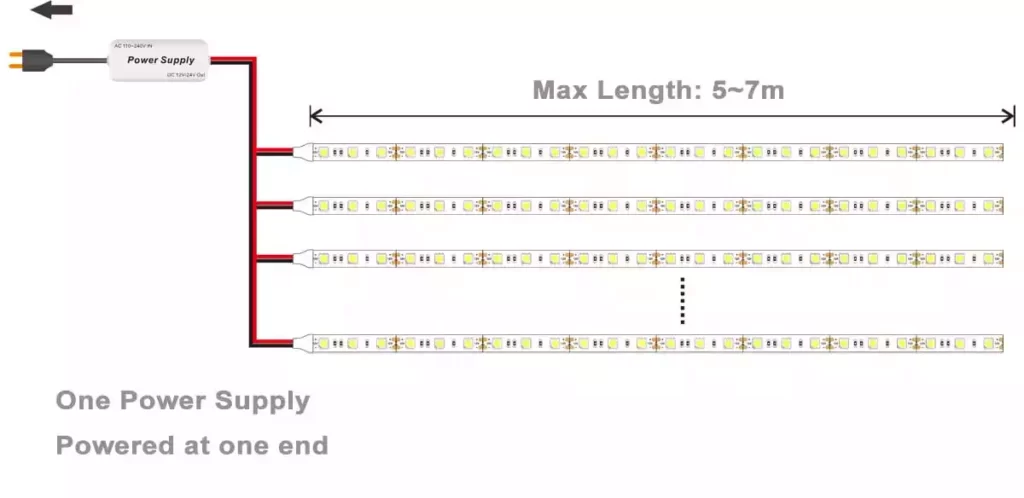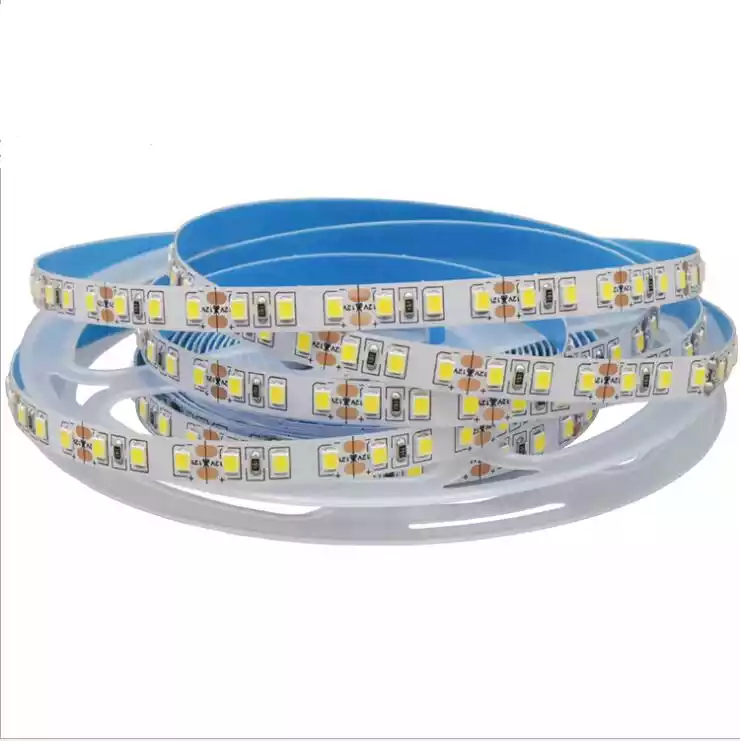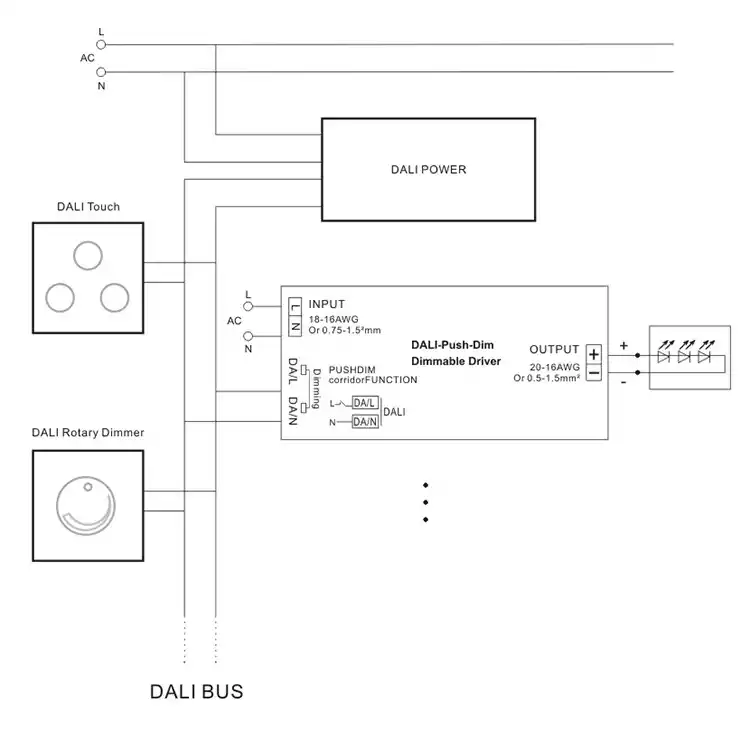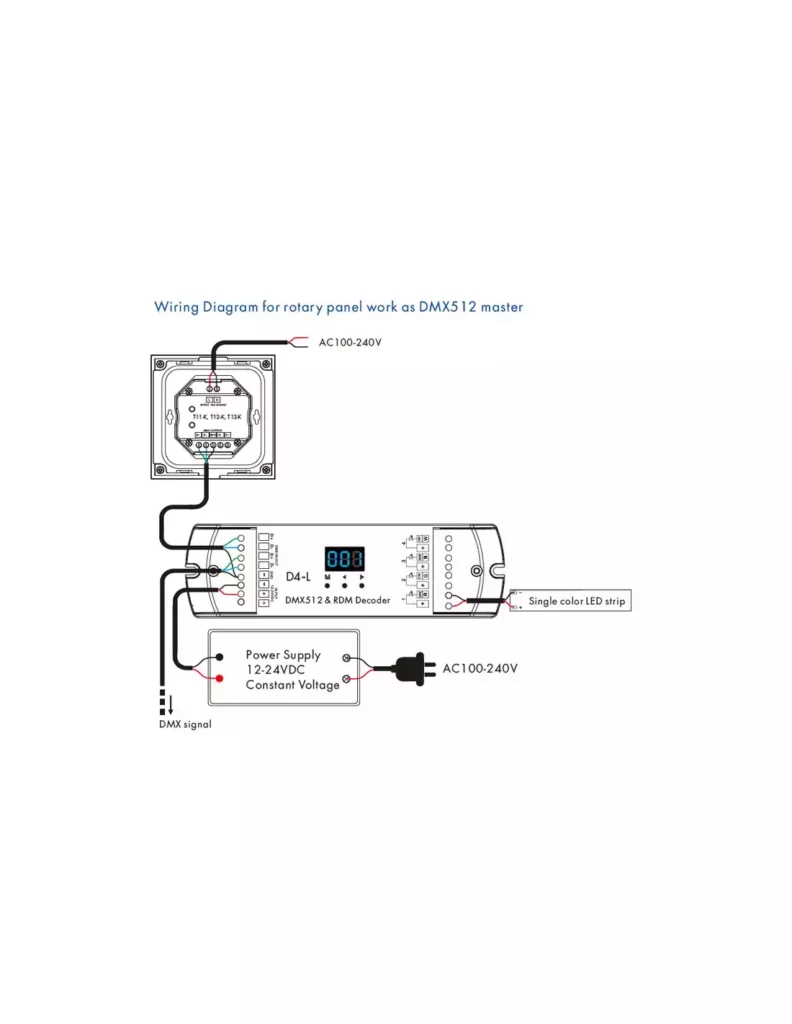How to Wire LED Strip Lights: A Comprehensive Guide (Diagram Included)
-
by Maisie Ou
- Last updated March 6, 2023
Table of Contents
LED strip lights are a popular lighting solution due to their versatility and energy efficiency.
However, wiring LED strip lights can be a bit tricky, especially if you are new to DIY electronics.
In this guide, we will cover everything you need to know to how to wire various types of LED strips, including single color, tunable white, RGB, RGBW, RGBCCT, and addressable LED strips.
To better understand how to wire, we need to learn about voltage drop and parallel connection first.
Voltage Drop
Voltage drop is a common issue that can occur when wiring LED strip lights.
This occurs when the voltage supplied to the LED strip is not enough to power all of the LEDs evenly, resulting in dimmer or unevenly lit sections of the strip.
To mitigate the impact of voltage drop, it’s recommended to wire LED strips in parallel to the power supply, which helps to distribute power evenly and prevent the end of the strip from appearing dimmer than the beginning.
For more information on voltage drop, please read What is LED strip voltage drop?
Parallel Connection
When wiring LED strip lights, it is important to wire them in parallel rather than in series. Wiring them in series can result in uneven brightness and can cause the entire strip to fail if one LED fails. Wiring them in parallel ensures that each LED receives the same voltage and current, resulting in even brightness and reliability.
The most common way to avoid voltage drop problems is to connect multiple LED strips in parallel to a power supply, controller, or amplifier.

Another way is to connect both ends of the LED strip to the same power source, controller, or amplifier.

Be sure NOT to connect multiple strips in series to the led strip power supply, controller, or amplifier.
PWM Amplifier
If you want to control the brightness of your LED strip lights, you can use a PWM (Pulse Width Modulation) amplifier.
A PWM amplifier allows you to adjust the brightness of the LEDs by changing the duty cycle of the pulse signal.
This is a simple and effective way to create dynamic lighting effects.
How to Wire Single-Color LED Strip Lights
To wire single-color LED strip lights, you will need a power supply, a LED strip, and a connector. see the below single-color led strip lights wiring diagram.

Step:
First, connect the LED strip to the connector.
Then, connect the connector to the power supply.
Make sure that you connect the positive and negative wires correctly, as reversing them can damage the LED strip.
Wring single-color LED strip lights with non-dimmable LED drivers
It is common to wire a single-color LED strip to a non-dimmable power source without any controller. However, it is important to ensure that the total power of the LED strip lights does not exceed 80% of the power supply capacity, as per the 80% power supply principle.

Wring single-color LED strip lights with dimmable LED drivers
In situations where we need to adjust the brightness of the LED strip, it’s necessary to connect the single-color LED strip with a dimmable power supply.
The three most common dimming methods are 0-10V, Triac, and DALI.
0-10V dimmable LED driver connection diagram

Triac dimmable LED driver connection diagram

DALI dimmable LED driver connection diagram

Wring single-color LED strip lights with LED controllers
Another option for adjusting the brightness of a single-color LED strip light is by connecting it to a controller.
Without PWM amplifier
If you only connect a few LED strips to an LED controller, an LED amplifier may not be required.

With PWM amplifier
When you connect a small number of LED strips with an LED controller, an LED amplifier is not necessary.

single color led strip controller connection diagram with the amplifier
Wring single color LED strip lights with DMX512 decoder

How to Wire Tunable White LED Strip Lights
Tunable white LED strip lights typically come with two different color temperature LEDs and three wires. By adjusting the brightness of each color temperature, the mixed color temperature can be changed to achieve the desired lighting effect.
Tunable white LED strip lights allow you to adjust the color temperature of the light output.
To wire 3-wire led light bar wiring diagram-tunable white LED strip lights, you will need a power supply, a LED strip, a controller, and a connector.
Step:
First, Connect the LED strip to the controller and the controller to the power supply.
Then, connect the connector to the controller.
Make sure that you connect the positive and negative wires correctly.
Below is about 3 wire led light wiring diagram
Wring tunable white LED strip lights with dimmable LED drivers
While dimmable power supplies are typically only suitable for adjusting tunable white LED strips, the addition of the DT8 protocol in DALI enables it to support tunable white, RGB, RGBW, and RGBCCT LED strip lights.
Wring tunable white LED strip lights with LED controllers
A small number of tunable white LED strips only requires a tunable white LED controller, while a large number of strips may require a PWM amplifier in addition to the controller.
Without PWM amplifier
With PWM amplifier
Wring tunable white LED strip lights with DMX512 decoder
How to Wire RGB LED Strip Lights
RGB LED strip typically includes four wires – common anode, red, green, and blue. These LED strips are primarily used with LED controllers, but they can also be used with DALI DT8 dimmable drivers.
Wring RGB LED strip lights with dimmable LED drivers
DALI DT8 RGB LED driver
Wring RGB LED strip lights with LED controllers
Without PWM amplifier
With PWM amplifier
Wring RGB LED strip lights with DMX512 decoder
How to Wire RGBW LED Strip Lights
RGBW LED strip lights are similar to RGB LED strip lights, but they also have a separate white LED. This allows you to create a wider range of colors and to adjust the brightness of the white light independently of the RGB colors. To wire RGBW LED strip lights, you will need a power supply, a RGBW LED strip, an RGBW controller, and a connector. Connect the LED strip to the controller and the controller to the power supply. Then, connect the connector to the controller. Make sure that you connect the positive and negative wires correctly.
Wring RGBW LED strip lights with dimmable LED drivers
DALI DT8 RGBW LED driver
Wring RGBW LED strip lights with LED controllers
Without PWM amplifier
Wring RGBW LED strip lights with DMX512 decoder
With PWM amplifier
How to Wire RGBCCT LED Strip Lights
- RGBCCT LED strip lights have six wires: one for each color (red, green, blue), two for white (warm and cool), and one for power (+ and -).
- To wire them, first, connect the positive (+) wire to the positive (+) terminal of your power supply or dimmer/controller. Then, connect the negative (-) wire to the negative (-) terminal of your power supply or dimmer/controller.
- Next, connect the red, green, and blue wires to the corresponding terminals on your RGB controller. Connect the warm and cool white wires to the corresponding terminals on your tunable white controller. Make sure to follow the wiring diagram provided by the manufacturer.
Wring RGBW LED strip lights with dimmable LED drivers
DALI DT8 RGBW LED driver
Wring RGBW LED strip lights with LED controllers
Without PWM amplifier
With PWM amplifier
Wring RGBW LED strip lights with DMX512 decoder
How to wire addressable LED strip lights
An individually addressable LED strip, also known as a digital LED strip, pixel LED strip, magic LED strip, or dream color LED strip, features control ICs that enable you to control each LED or group of LEDs individually. This enables you to manage a specific section of the LED strip, hence the term ‘addressable’.
- Addressable LED strip lights have three wires: data, clock, and power (+ and -).
- To wire them, first, connect the positive (+) wire to the positive (+) terminal of your power supply. Then, connect the negative (-) wire to the negative (-) terminal of your power supply.
- Next, connect the data and clock wires to the corresponding terminals on your addressable LED controller. Make sure to follow the wiring diagram provided by the manufacturer.
For more information, you can read The Ultimate Guide To Addressable LED Strip.
How to wire SPI addressable LED strip lights
The Serial Peripheral Interface (SPI) is a widely used synchronous serial communication interface that is commonly found in embedded systems. It was originally developed by Motorola in the 1980s and has since become a widely adopted industry standard. Some examples of devices that use SPI include Secure Digital (SD) cards and liquid crystal displays.
Wiring SPI addressable LED strip lights involve connecting the four wires of the LED strip to the corresponding ports on the LED controller. The four wires are typically labeled as VCC, GND, DI (Data In), and CI (Clock In).
The VCC wire is connected to the positive terminal of the power supply, and the GND wire is connected to the negative terminal of the power supply. The DI and CI wires are connected to the corresponding ports on the LED controller, usually labeled as DI and CI.
Once the wiring is complete, the LED controller can be connected to a compatible power supply and a digital control signal source such as a microcontroller, Arduino board, or computer, which will send digital data signals to the LED controller to control the color and pattern of the LEDs.
SPI addressable LED strip lights with data and clock channels
SPI addressable LED strip lights with data and backup data channels
How to wire DMX512 addressable LED strip lights
An LED strip that is DMX512 addressable can receive DMX512 signals without a decoder and adjust the color and brightness of the lights based on the signal.
To use the DMX512 addressable LED strip, it is necessary to set the DMX512 address for the LED strip, which is a one-time operation.
5-wire led strip wiring diagram
Conclusion
With this comprehensive guide and diagram, you should be able to wire your LED strip lights with ease and achieve the desired lighting effect in your space.
MSHLED produces top-quality LED strips and LED neon flex that undergo rigorous testing in advanced laboratories to ensure superior quality. Additionally, we provide personalized options for our LED strips and neon flex. Contact MSHLED immediately for premium LED strip and LED neon flex solutions.
Related Posts
Get in Touch with Us Now!
Do you have questions or feedback? We’d love to hear from you! Just fill out the form below, and our friendly team will respond ASAP.



